Table of Contents
Introduction
In recent years, smoothies have taken the world by storm, becoming a go-to choice for health-conscious individuals looking to pack more nutrients into their diets. The rise of smoothies as a popular health trend is hardly surprising, given their convenience, versatility, and delicious taste. Whether you’re a busy professional trying to fuel your body on the go, an athlete seeking post-workout recovery, or simply someone who wants to boost their fruit and vegetable intake, smoothies offer a quick and easy solution.
But what exactly makes smoothies such a powerful tool for wellness? For starters, they allow you to consume a wide variety of nutrient-dense ingredients in a single, easy-to-digest serving. By blending together fruits, vegetables, protein sources, and healthy fats, you can create a well-balanced meal or snack that supports your specific health goals. Smoothies are also incredibly customizable, allowing you to cater to your unique taste preferences and dietary needs.
In this comprehensive guide, we’ll dive deep into the world of smoothies, exploring everything from the best ingredients to use and the essential tools you’ll need, to tried-and-true recipes and expert tips for crafting the perfect blend. Whether you’re a smoothie novice or a seasoned pro, you’ll find plenty of inspiration and practical advice to help you unlock the secrets to vibrant health and delicious flavors.
Get ready to discover:
- The building blocks of a perfect smoothie, including the best fruits, vegetables, liquids, proteins, fats, and superfoods to use
- The essential tools and equipment every smoothie enthusiast needs
- A wide range of smoothie recipes tailored to specific goals and occasions, from energy-boosting breakfast blends to kid-friendly creations
- The art and science behind crafting the ultimate smoothie, including tips for achieving the perfect consistency, layering ingredients, and troubleshooting common issues
- How to incorporate smoothies into a balanced diet and various eating patterns

The Building Blocks of a Perfect Smoothie
Crafting the perfect smoothie is all about combining the right ingredients in the right proportions. Each component plays a crucial role in creating a balanced, nutritious, and delicious blend. Let’s take a closer look at the key building blocks of a smoothie and how to choose the best options for your needs.
Fruits: Choosing the Right Combination for Flavor and Nutrition
Fruits are the foundation of most smoothies, providing natural sweetness, vibrant colors, and a host of essential vitamins and minerals. When selecting fruits for your smoothies, aim for a mix of flavors and textures to keep things interesting. Some classic smoothie fruits include:
- Berries (strawberries, blueberries, raspberries)
- Bananas
- Mangoes
- Pineapples
- Peaches
- Apples
- Kiwis
Feel free to experiment with different combinations to find your perfect blend. Keep in mind that frozen fruits can help create a thicker, creamier texture, while fresh fruits can add a brighter, more refreshing taste.
Vegetables: Incorporating Leafy Greens and Other Nutrient-Dense Veggies
While fruits are often the star of the show, vegetables are the unsung heroes of a truly nutritious smoothie. Incorporating leafy greens and other nutrient-dense veggies into your blends is an excellent way to boost your intake of essential vitamins, minerals, and fiber. Some vegetables that work well in smoothies include:
- Spinach
- Kale
- Swiss chard
- Cucumber
- Carrots
- Beets
- Zucchini
When adding vegetables to your smoothies, start with a small amount and gradually increase the quantity as you get used to the taste. You can also mask the flavor of greens by pairing them with sweet fruits like bananas or mangoes.
Liquid Bases: Exploring Options Beyond Water and Milk
The liquid you use in your smoothie can greatly impact its flavor, texture, and nutritional value. While water and milk are classic choices, there are plenty of other options to explore, such as:
- Coconut water
- Almond milk
- Oat milk
- Soy milk
- Hemp milk
- Green tea
- Herbal teas
Each liquid base offers unique benefits and flavor profiles, so don’t be afraid to experiment and find your favorites.
Protein Sources: Plant-Based and Dairy Options for Muscle Recovery and Satiety
Including a protein source in your smoothies can help support muscle recovery, promote satiety, and keep you feeling full and energized for longer. Some excellent protein options for smoothies include:
- Greek yogurt
- Cottage cheese
- Silken tofu
- Plant-based protein powders (pea, hemp, rice)
- Nut butters (almond, peanut, cashew)
- Seeds (chia, flax, hemp)
Choose a protein source that aligns with your dietary preferences and goals, and be sure to read labels carefully to avoid added sugars or artificial ingredients.
Healthy Fats: Adding Avocado, Nuts, and Seeds for Creaminess and Essential Fatty Acids
Incorporating healthy fats into your smoothies not only adds a creamy, satisfying texture but also provides your body with essential fatty acids that support brain function, heart health, and nutrient absorption. Some excellent sources of healthy fats for smoothies include:
- Avocado
- Nut butters (almond, cashew, peanut)
- Seeds (chia, flax, hemp)
- Coconut oil
- Olive oil
When adding fats to your smoothies, start with a small amount (about 1/4 to 1/2 an avocado or 1 to 2 tablespoons of nut butter or seeds) to avoid overpowering the other flavors. Keep in mind that a little goes a long way when it comes to healthy fats, as they are calorie-dense.
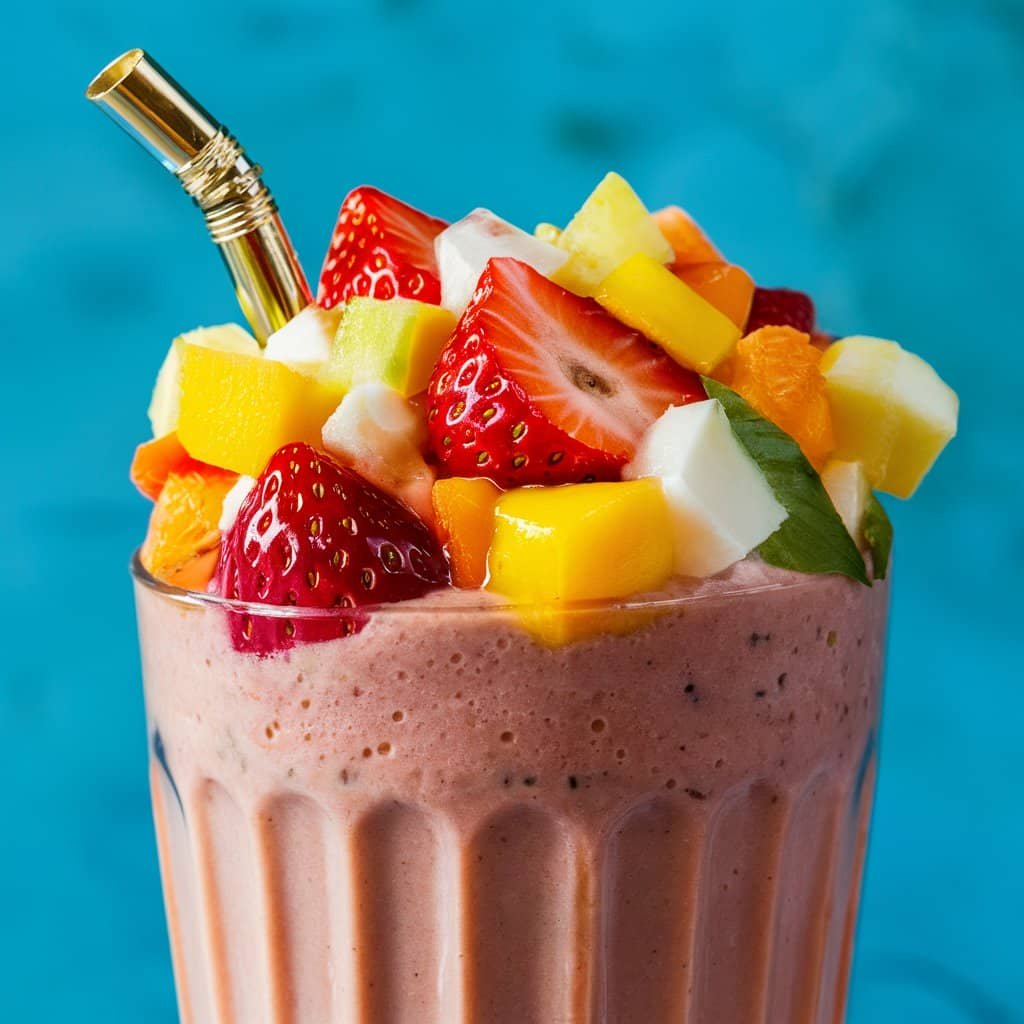
Superfoods and Boosters: Enhancing Your Smoothies with Powerful Ingredients
Superfoods and boosters are concentrated sources of nutrients that can take your smoothies to the next level in terms of both flavor and nutritional value. These ingredients are packed with antioxidants, vitamins, minerals, and other beneficial compounds that can support overall health and wellness. Some popular smoothie superfoods and boosters include:
- Acai berries
- Goji berries
- Maca powder
- Spirulina
- Chlorella
- Cacao powder
- Matcha green tea powder
- Turmeric
- Cinnamon
- Bee pollen
When incorporating superfoods and boosters into your smoothies, start with a small amount (usually 1 teaspoon to 1 tablespoon) and gradually increase the quantity as desired. Some of these ingredients have strong flavors, so it’s essential to find the right balance that works for your taste preferences.
By combining a variety of fruits, vegetables, liquid bases, protein sources, healthy fats, and superfood boosters, you can create smoothies that are not only delicious but also packed with the nutrients your body needs to thrive. In the next section, we’ll explore the essential tools and equipment every smoothie enthusiast needs to craft the perfect blends.
Smoothie-Making Essentials: Tools of the Trade
Having the right tools and equipment can make all the difference when it comes to creating smooth, creamy, and delicious smoothies. In this section, we’ll cover the essential items every smoothie lover should have in their kitchen.
Blenders 101: What to Consider When Choosing a Blender
A high-quality blender is the most crucial tool for making smoothies. When choosing a blender, consider the following factors:
- Power: Look for a blender with at least 1000 watts of power to ensure it can handle tough ingredients like frozen fruits and leafy greens.
- Blade design: High-quality blenders feature strong, durable blades that can efficiently pulverize ingredients for a smooth, creamy texture.
- Capacity: Consider the size of the blender jar and whether it suits your needs. If you plan on making large batches of smoothies, opt for a blender with a larger capacity.
- Ease of cleaning: Choose a blender with removable, dishwasher-safe parts for easy cleanup.
Top Blender Recommendations for Every Budget
Whether you’re looking for a high-end investment or a budget-friendly option, there’s a blender out there to suit your needs. Some top recommendations include:
- High-end: Vitamix 5200, Blendtec Designer 725, Breville BBL620
- Mid-range: Ninja Professional Countertop Blender, Oster Versa Blender, KitchenAid K400
- Budget-friendly: Nutri Bullet Pro, Hamilton Beach Power Elite, Ninja Nutri Pro
Must-Have Accessories for Smoothie Enthusiasts
In addition to a high-quality blender, there are several accessories that can make your smoothie-making experience even more enjoyable and convenient. Some must-have items include:
- Measuring cups and spoons: Accurate measurements are key to creating well-balanced smoothies with the perfect flavor and consistency.
- Spatulas: A flexible spatula can help you easily scrape down the sides of your blender jar and ensure all ingredients are thoroughly blended.
- Reusable straws: Investing in a set of reusable straws (stainless steel, silicone, or bamboo) is an eco-friendly way to enjoy your smoothies while minimizing waste.
- Smoothie bowls and spoons: If you enjoy thicker smoothies or smoothie bowls, having a set of wide, shallow bowls and spoons can make for a more satisfying and visually appealing experience.
Containers and Bottles for Easy Storage and On-the-Go Sipping
Having the right containers and bottles can make it easier to store and transport your smoothies, whether you’re sipping at home or on the go. Consider investing in:
- Mason jars: These versatile glass jars are perfect for storing pre-portioned smoothie ingredients or blended smoothies in the fridge.
- Insulated tumblers: Double-walled, vacuum-insulated tumblers can keep your smoothies cold for hours, making them ideal for taking to work or on outdoor adventures.
- Squeeze bottles: Soft, squeezable bottles with a built-in straw are great for kids or for enjoying smoothies during physical activities like hiking or cycling.
By equipping your kitchen with these essential tools and accessories, you’ll be well-prepared to create and enjoy delicious, nutritious smoothies whenever the craving strikes.
Smoothie Recipes for Every Goal and Occasion
Now that we’ve covered the building blocks of a perfect smoothie and the essential tools you’ll need, it’s time to dive into some delicious and nutritious recipes tailored to various goals and occasions.
Energy-Boosting Breakfast Smoothies to Fuel Your Day
Starting your day with an energy-boosting smoothie can help you power through your morning routine and tackle the day ahead. Try these invigorating blends:
- Green Energy Booster:
- 1 cup spinach
- 1 small banana
- 1/2 cup pineapple chunks
- 1/2 inch piece of ginger
- 1 tbsp chia seeds
- 1 cup coconut water
- Berry-Beet Vitality Blend:
- 1 small beet, peeled and diced
- 1 cup mixed berries (strawberries, blueberries, raspberries)
- 1/2 cup plain Greek yogurt
- 1 tbsp honey
- 1 cup unsweetened almond milk
Post-Workout Recovery Smoothies to Support Muscle Repair and Growth
After a challenging workout, your body needs the right nutrients to support muscle recovery and growth. These protein-packed smoothies can help:
- Chocolate-Peanut Butter Recovery Shake:
- 1 banana
- 1 tbsp cocoa powder
- 2 tbsp peanut butter
- 1 scoop chocolate protein powder
- 1 cup unsweetened almond milk
- Tropical Turmeric Restore:
- 1 cup mango chunks
- 1/2 cup pineapple chunks
- 1/2 inch piece of turmeric, peeled
- 1 scoop vanilla protein powder
- 1 cup coconut milk
- 1 tsp honey
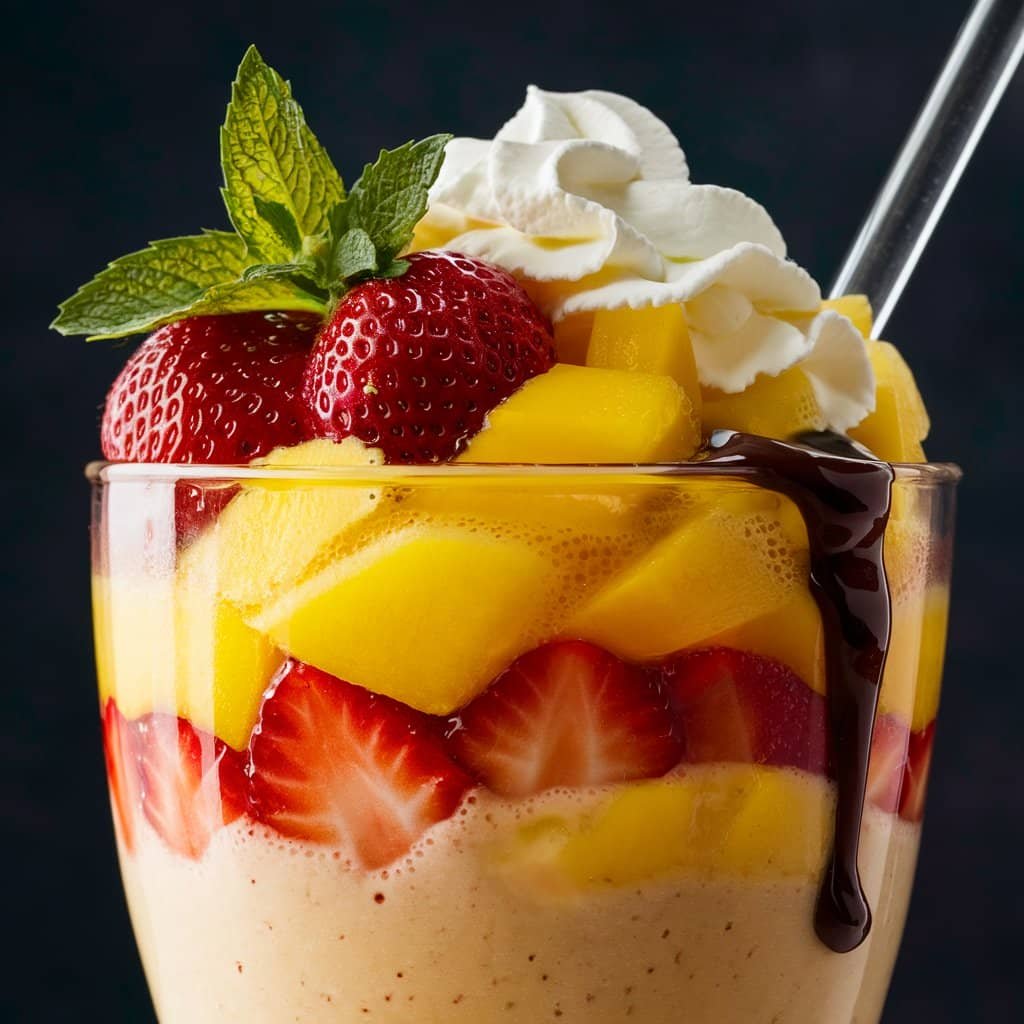
Nutrient-Packed Green Smoothies for Optimal Health
Green smoothies are an excellent way to incorporate more leafy greens and other nutrient-dense vegetables into your diet. Try these nourishing blends:
- Spinach-Avocado Detox Smoothie:
- 1 cup spinach
- 1/2 avocado
- 1 small banana
- 1/2 cup cucumber
- 1 tbsp lime juice
- 1 cup coconut water
- Kale-Apple Green Machine:
- 1 cup kale
- 1 small green apple
- 1/2 cup cucumber
- 1/2 inch piece of ginger
- 1 tbsp chia seeds
- 1 cup unsweetened almond milk
Low-Calorie Smoothies to Support Weight Loss and Management
If you’re looking to manage your weight, these low-calorie smoothies can help you stay on track while still providing essential nutrients:
- Berry-Spinach Slim Down:
- 1 cup spinach
- 1 cup mixed berries (strawberries, blueberries, raspberries)
- 1/2 cup plain Greek yogurt
- 1 tsp honey
- 1 cup unsweetened almond milk
- Tropical Green Zinger:
- 1 cup spinach
- 1/2 cup mango chunks
- 1/2 cup pineapple chunks
- 1/2 inch piece of ginger
- 1 tbsp chia seeds
- 1 cup coconut water
Immune-Boosting Smoothies to Help You Stay Healthy Year-Round
Support your immune system with these nutrient-packed smoothies that feature ingredients known for their immune-boosting properties:
- Citrus-Ginger Immunity Shot:
- 1 orange, peeled
- 1/2 grapefruit, peeled
- 1 small carrot
- 1/2 inch piece of ginger
- 1/2 cup water
- 1 tsp honey (optional)
- Berry-Beet Immunity Blend:
- 1 small beet, peeled and diced
- 1 cup mixed berries (strawberries, blueberries, raspberries)
- 1/2 cup plain Greek yogurt
- 1 tbsp chia seeds
- 1 cup unsweetened almond milk
In the next section, we’ll explore indulgent, dessert-inspired smoothies that are secretly healthy and kid-friendly blends to help picky eaters get their fruits and veggies.
Indulgent Dessert-Inspired Smoothies That Are Secretly Healthy
Satisfy your sweet tooth with these dessert-inspired smoothies that are packed with nutrients and wholesome ingredients:
- Chocolate-Hazelnut Dream:
- 1 frozen banana
- 1 tbsp cocoa powder
- 1 tbsp hazelnut butter
- 1 tsp vanilla extract
- 1 cup unsweetened almond milk
- Strawberry-Vanilla Cheesecake Smoothie:
- 1 cup frozen strawberries
- 1/2 cup low-fat cottage cheese
- 1 tsp vanilla extract
- 1 tbsp honey
- 1 cup unsweetened almond milk
Kid-Friendly Smoothies to Help Picky Eaters Get Their Fruits and Veggies
Encourage your children to develop a love for healthy foods with these delicious and nutritious kid-friendly smoothies:
- Peanut Butter and Jelly Smoothie:
- 1 frozen banana
- 1 cup frozen mixed berries
- 2 tbsp peanut butter
- 1 cup unsweetened almond milk
- Green Monster Smoothie:
- 1 cup spinach
- 1 frozen banana
- 1 small pear
- 1 tbsp honey
- 1 cup unsweetened almond milk
By incorporating a variety of smoothie recipes tailored to your specific goals and preferences, you can ensure that you’re getting the nutrients your body needs while enjoying delicious and satisfying blends.

The Art and Science of Crafting the Ultimate Smoothie
Creating the perfect smoothie is a blend of art and science. By understanding the key factors that contribute to a smoothie’s texture, flavor, and overall appeal, you can elevate your smoothie game and consistently craft delicious, satisfying blends.
Mastering the Perfect Smoothie Consistency: Tips and Tricks
Achieving the ideal smoothie consistency is all about finding the right balance of ingredients and blending techniques. Here are some tips to help you master the perfect texture:
- Start with your liquid base: Adding your liquid first helps create a vortex that pulls the other ingredients down towards the blades for a smoother blend.
- Add frozen ingredients gradually: If using a lot of frozen fruits or vegetables, add them to the blender in smaller batches to avoid overworking the motor and ensure a smooth, even consistency.
- Use the pulse function: Pulsing the blender a few times before blending can help break down larger chunks and create a more uniform texture.
- Adjust the liquid-to-solid ratio: If your smoothie is too thick, add more liquid (in small increments) until you reach the desired consistency. If it’s too thin, add more solid ingredients like frozen fruit or ice cubes.
Layering Ingredients for Efficient Blending and Better Flavor
The order in which you add ingredients to your blender can significantly impact the texture and flavor of your smoothie. Here’s a general guide for layering ingredients:
- Liquid base (water, milk, coconut water, etc.)
- Soft ingredients (fresh fruits, leafy greens, yogurt, nut butters)
- Frozen ingredients (frozen fruits, vegetables, ice cubes)
- Powders and superfoods (protein powder, maca, cacao, etc.)
By layering your ingredients in this order, you’ll ensure that the blender can efficiently process all components, resulting in a smooth, well-blended smoothie.
Meal-Prepping Smoothies: How to Store Ingredients and Pre-Blended Smoothies
Meal-prepping your smoothies can save you time and ensure that you always have a healthy, delicious option on hand. Here are two ways to prep your smoothies in advance:
- Smoothie packs: Portion out your smoothie ingredients (excluding the liquid base) into individual serving bags or containers and store them in the freezer. When ready to blend, simply add the contents of the smoothie pack to your blender along with your chosen liquid.
- Pre-blended smoothies: Blend your smoothie as usual and pour it into a mason jar or an airtight container, leaving some room at the top for expansion. Store the pre-blended smoothie in the freezer. When ready to enjoy, let it thaw in the refrigerator overnight or at room temperature for a few hours.
Flavor Pairing Guide: Combinations That Work (and Some That Don’t)
Experimenting with different flavor combinations is part of the fun of creating smoothies. Here are some classic pairings that work well together:
- Strawberry + banana
- Mango + pineapple
- Blueberry + vanilla
- Chocolate + peanut butter
- Spinach + apple
- Kale + pineapple
While there are no hard and fast rules when it comes to flavor combinations, some pairings may not be as appealing, such as:
- Citrus fruits + dairy (the acidity can cause curdling)
- Garlic or onion + sweet fruits (unless you’re going for a savory smoothie)
Troubleshooting Common Smoothie Fails and How to Avoid Them
Even with the best intentions and techniques, sometimes smoothies don’t turn out as planned. Here are some common smoothie fails and how to avoid them:
- Gritty or chunky texture:
- Cause: Overloading the blender, not blending long enough, or not adding enough liquid.
- Solution: Blend in smaller batches, blend for longer, or add more liquid to help the ingredients blend more smoothly.
- Separated or watery consistency:
- Cause: Not using enough frozen ingredients, or using ingredients with high water content (e.g., cucumbers, melons).
- Solution: Add more frozen fruits or ice cubes to thicken the smoothie, or use creamy ingredients like bananas, avocados, or yogurt to help emulsify the mixture.
- Bitter or unpleasant taste:
- Cause: Using overripe or bruised fruits, or adding too many bitter greens (e.g., kale, dandelion greens).
- Solution: Use ripe, unblemished fruits for the best flavor, and balance bitter greens with sweet fruits or a touch of honey.
- Smoothie is too sweet:
- Cause: Using too many high-sugar fruits or adding too much sweetener.
- Solution: Balance sweet fruits with vegetables or low-sugar fruits (e.g., berries), and add sweeteners sparingly, tasting as you go.
By being mindful of these common issues and following the tips outlined in this guide, you’ll be well-equipped to create smoothies that are consistently delicious, nutritious, and satisfying.
Smoothies as Part of a Balanced Diet
While smoothies can be a convenient and tasty way to boost your nutrient intake, it’s essential to remember that they should be part of a balanced, varied diet.
How Smoothies Can Fit into Various Eating Patterns
Smoothies can be easily adapted to suit a wide range of dietary preferences and eating patterns, such as:
- Vegan: Use plant-based milk, yogurt, and protein sources, and focus on fruits, vegetables, nuts, and seeds.
- Paleo: Opt for coconut milk, nut butters, and plant-based protein powders, and prioritize fruits, vegetables, and healthy fats.
- Keto: Choose low-carb fruits (e.g., berries), high-fat ingredients (e.g., avocado, coconut oil), and sugar-free sweeteners.
- Gluten-free: Most smoothie ingredients are naturally gluten-free, but be sure to check labels on any packaged items, such as protein powders or nut butters.
The Importance of Variety and Moderation
While smoothies can be nutrient-dense, it’s crucial to consume a variety of whole foods in your diet. Whole fruits and vegetables provide essential fiber, which is often lost during blending. Additionally, chewing and digesting whole foods can promote feelings of fullness and satisfaction that may be missing from a liquid meal.
Moderation is also key when incorporating smoothies into your diet. Be mindful of portion sizes and the balance of ingredients you use, as it’s easy to consume excess calories, sugar, or fat in a single smoothie.
When to Enjoy Smoothies and When to Opt for Whole Foods
Smoothies can be a great option for busy mornings, post-workout recovery, or as a nutrient-packed snack. However, it’s important to listen to your body and consider your individual needs and preferences. Some situations where you might opt for whole foods over a smoothie include:
- When you’re craving a more substantial, chewable meal
- When you have more time to prepare and enjoy a sit-down meal
- When you’re looking to practice mindful eating and engage with your food more fully
By finding the right balance between smoothies and whole foods, you can ensure that you’re nourishing your body with a wide array of nutrients while still enjoying the convenience and delicious flavors that smoothies offer.

Conclusion
In this comprehensive guide, we’ve explored the world of smoothies and discovered the secrets to unlocking vibrant health and delicious flavors. From understanding the essential building blocks of a perfect smoothie to mastering the art and science of blending, you now have the knowledge and tools to create nourishing and satisfying smoothies tailored to your unique needs and preferences.
Recap of Key Takeaways
- Smoothies are a convenient and delicious way to boost your nutrient intake and support your health goals.
- The perfect smoothie combines a balance of fruits, vegetables, liquid base, protein, healthy fats, and superfoods.
- Investing in a high-quality blender and essential accessories can make your smoothie-making experience more enjoyable and efficient.
- Experimenting with different flavor combinations and adapting recipes to suit your needs can help you create smoothies that are both nutritious and delicious.
- Smoothies should be part of a balanced, varied diet that includes a range of whole foods.
Inspiration to Get Creative and Experiment with Smoothie Recipes
Armed with this knowledge, you now have the freedom to get creative and experiment with your own smoothie creations. Don’t be afraid to try new ingredients, flavor combinations, and blending techniques. Your perfect smoothie is waiting to be discovered!
Remember, the possibilities are endless when it comes to crafting delicious and nourishing smoothies. Whether you’re looking to boost your energy levels, support your post-workout recovery, or simply enjoy a refreshing and nutritious snack, there’s a smoothie recipe out there for you.
A Call-to-Action to Prioritize Health and Wellness Through Delicious, Nourishing Smoothies
As you embark on your smoothie journey, remember that every sip is an opportunity to nourish your body and support your overall health and well-being. By incorporating smoothies into your daily routine, you’re taking a proactive step towards prioritizing your health and wellness.

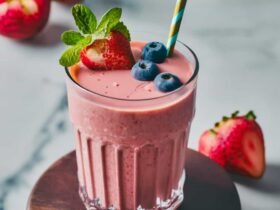
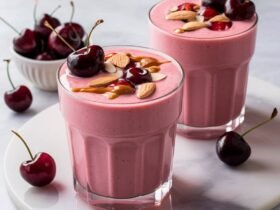
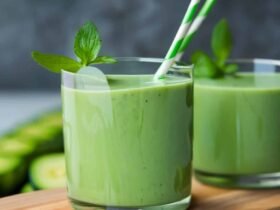
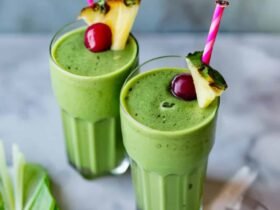
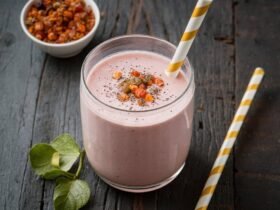
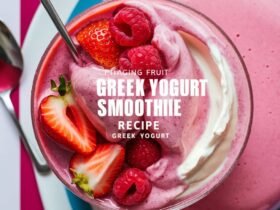


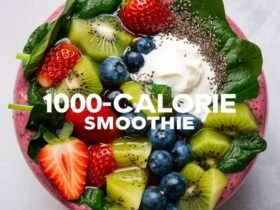
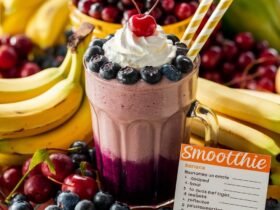
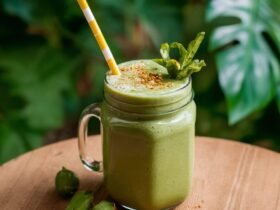
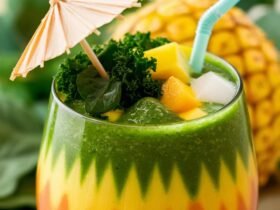
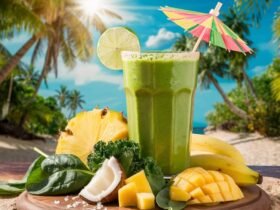

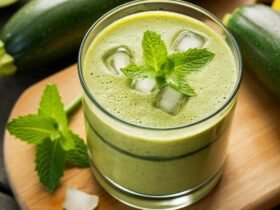
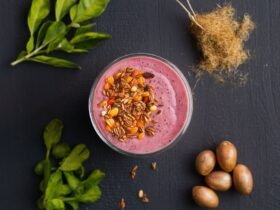
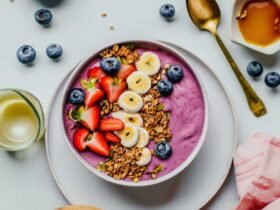
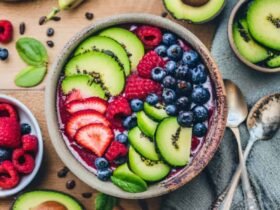
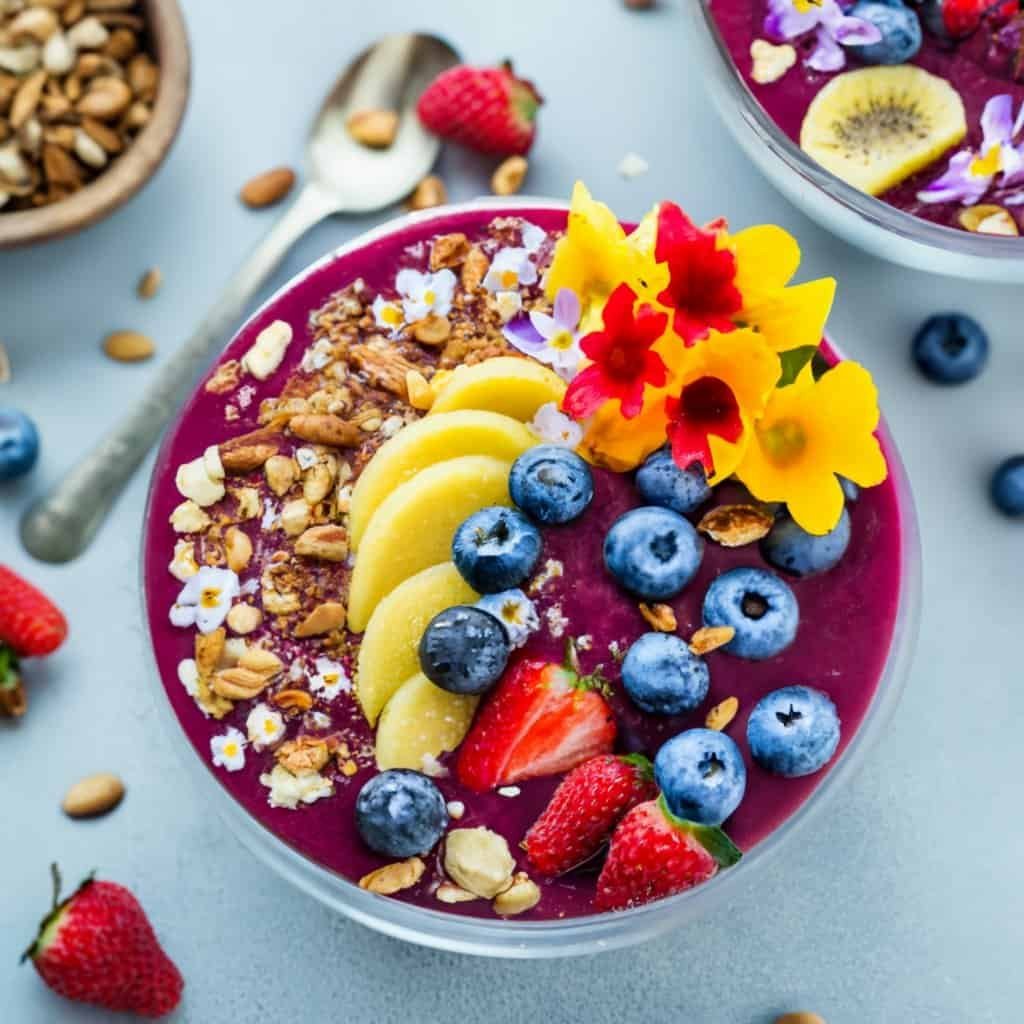

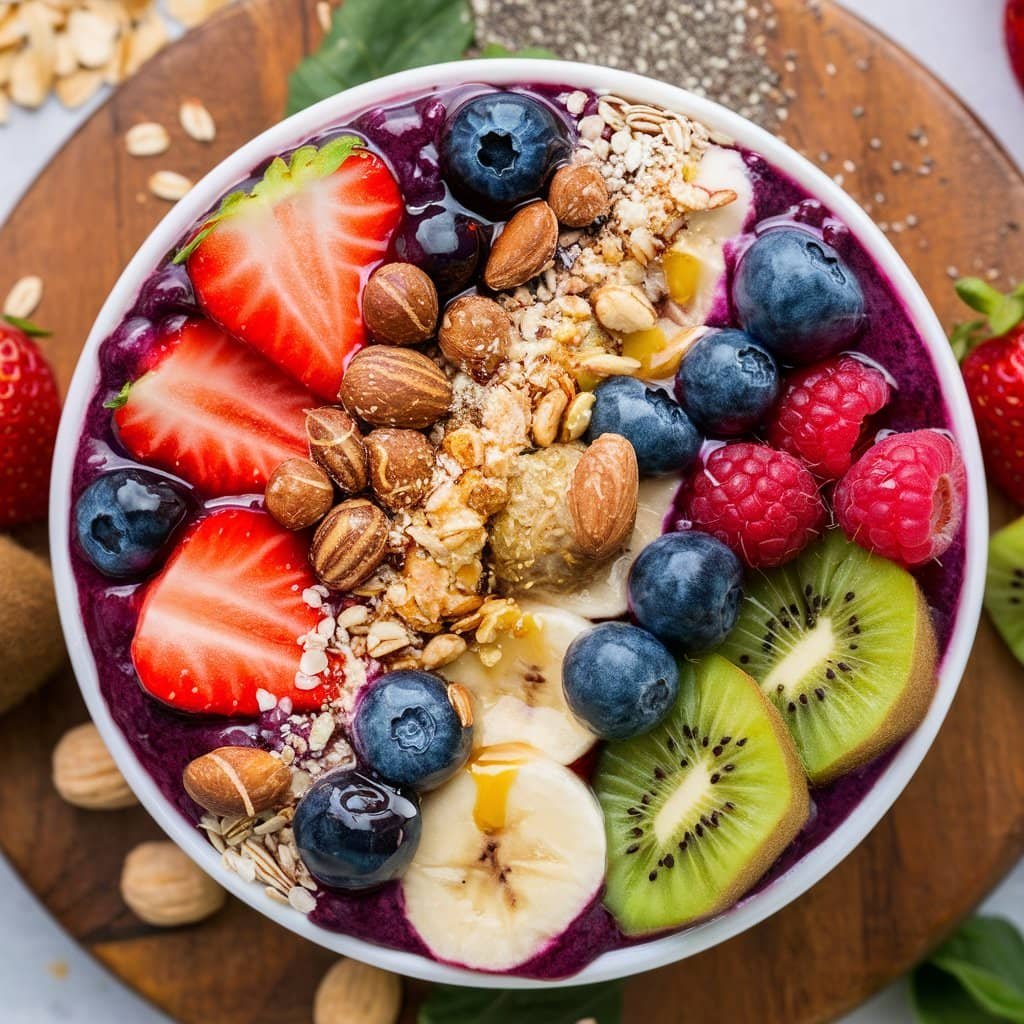
Leave a Reply